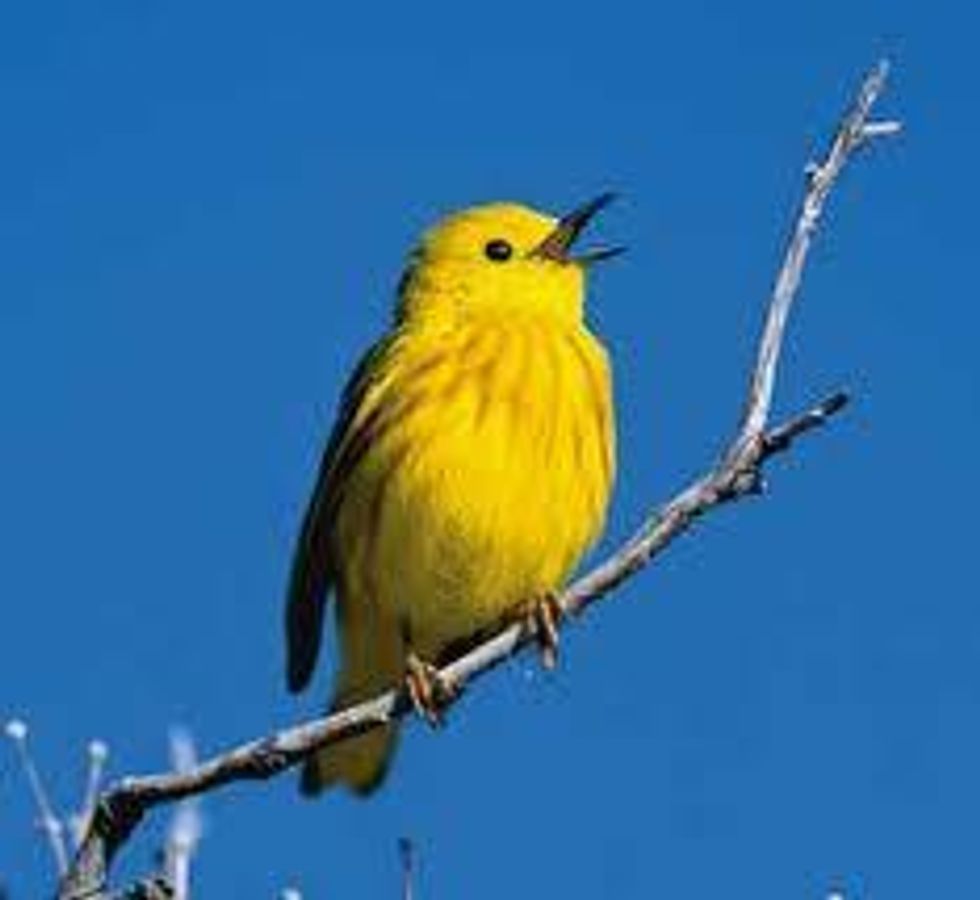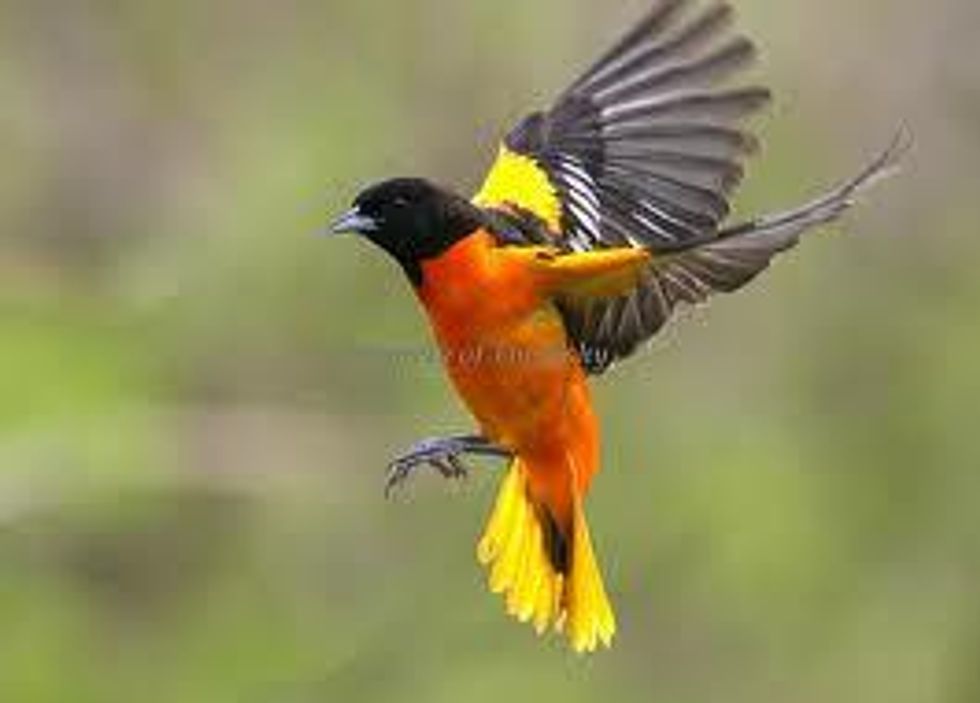Lately I have been sitting with the brooding knowledge that at least 7 million migrating songbirds were killed this spring running the gauntlet of 84,000 American communication towers that rise as high as 2,000 feet into the sky, braced by invisible guy wires that garotte the birds right out of the air.
This is actually just a fraction of the number of birds killed each year by running a collision course with human activity.
 This spring has been more silent than ever. The traditional dawn chorus of birdsong has ebbed to a few lonely little souls, most belonging to non-migratory species like cardinals, bluejays, chickadees and sparrows.
This spring has been more silent than ever. The traditional dawn chorus of birdsong has ebbed to a few lonely little souls, most belonging to non-migratory species like cardinals, bluejays, chickadees and sparrows.
They say that when Europeans first arrived on this continent, the migration of the passenger pigeons would literally darken the sky for minutes on end.
I have never seen a living passenger pigeon, and it seems that my grandchildren will not know what I mean when I talk about the dawn chorus of riotously busy, happy birdsong, any more than they will be able to imagine an apple orchard in full bloom buzzing with the diligent harvest of a million droning bees.
Knowledge like this makes me sick at heart. My rational side is aware that mourning is not productive, but another side of me knows that it is one of the special gifts of us humans to feel grief; to locate particular sadnesses in the larger landscape of suffering; and to use our sadness and anger at injustice as a lightening rod for change.
Other animals and birds feel grief as well, but you won't find the great community of birds gathering together to make plans to topple all the communication towers in North America.
No, the birds will go quietly, one by one, into the endless night of extinction.

Just as it was our ingenuity that created those needle-like structures, held up by steel deathwires, it is our job as humans to recognize the destruction we are causing and make sure it changes.
I am not suggesting that we give up our communications towers--that would truly be a quixotic quest!
I am suggesting that we place value on the lives of 7 million birds--the number that scientists estimate are killed annually by communications towers taller than 180 feet.
What can be done? Well, there must be some way to make those wires visible to the birds. We could drape them with some kind of fabric, or coat them with a glittering reflective paint. We could emit some kind of sound signal that would alert the birds to avoid the tower area.
The scientists studying this issue noted that simply changing the lights on the towers from solid red lights, which apparently mesmerize the birds in bad weather, to blinking lights, "could reduce mortality about 45 percent, or about 2.5 million birds. The study also recommended that businesses share towers to reduce their number and build more freestanding towers to reduce the need for guy wires."
As we saw when Rachel Carson succeeded in getting DDT banned, bird populations can and do rebound if given the chance.
But not once they're extinct.
We must act now, before the songbirds follow the passenger pigeons into permanent silence.

